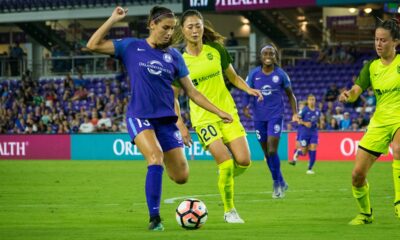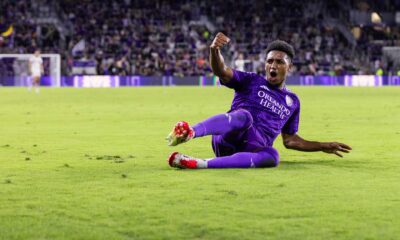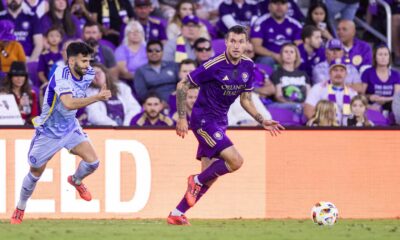Orlando City
Orlando City vs. Toronto FC: Preview, How to Watch, TV Info, Live Stream, Lineups, Match Thread, and More
The Lions are back on the road up north as they look to rebound in Toronto.
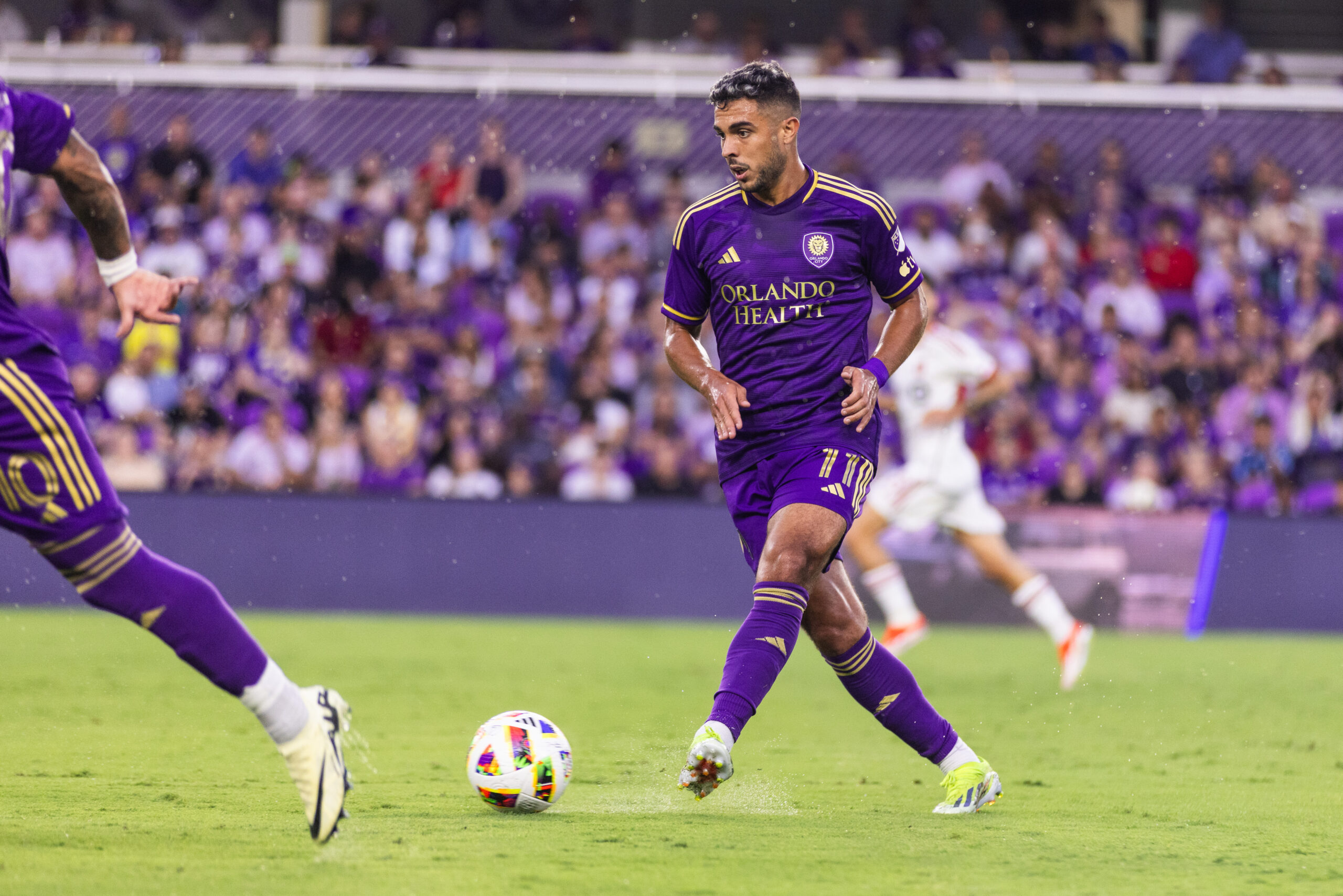
Welcome to your match thread for a midweek matchup between Orlando City (5-9-6, 21 points) and Toronto FC (7-11-3, 24 points) at BMO Field (7:30 p.m., MLS Season Pass on Apple TV+). It’s the second and final scheduled meeting between the Eastern Conference rivals this season.
Here’s what you need to know ahead of the match.
History
Orlando is 8-9-3 in the evenly split all-time, regular-season series. The Lions had a four-game winning streak and an eight-match unbeaten run (6-0-2) in the series snapped back in April (more on that below). Orlando is 3-4-3 on the road in the series, however, one of those “road” wins came in the Lions’ home stadium while Toronto was living a nomadic existence during COVID-19 pandemic travel restrictions.
The teams met in Orlando on April 27 and the Lions led most of the match on a Duncan McGuire goal. However, the Reds flipped the game on its head late, scoring twice in the final three minutes of normal time. Tyrese Spicer and Prince Owusu scored to lift Toronto to a 2-1 win.
The most recent meeting in Toronto came on Decision Day of last season on Oct. 21, when McGuire came off the bench and scored twice to beat Toronto 2-0. The teams met in Orlando on July 4, 2023, with Orlando City putting the Reds to the sword on Independence Day, beating the Canadian side, 4-0. Cesar Araujo, McGuire, Dagur Dan Thorhallsson, and Ercan Kara scored for the Lions, and Toronto finished with 10 men after Federico Bernardeschi was shown his second yellow card just past the hour mark.
Orlando City also romped 4-0 over the Reds in the previous meeting, Sept. 17, 2022 at Exploria Stadium. Facundo Torres, Kara, and Tesho Akindele scored for the Lions to go along with a Lukas MacNaughton own goal. The Lions won on May 14, 2022 at BMO Field, 1-0, thanks to a 92nd-minute goal from Kyle Smith, who flicked a header from a corner kick cross inside the far post to lift the Lions to victory.
The Lions went 2-0-1 in three meetings with Toronto FC in 2021. The teams played to a 1-1 draw at BMO Field on July 17, 2021. Jozy Altidore came off the bench to score the opener but Nani equalized from the penalty spot minutes later. Benji Michel drew the penalty, which was originally ruled a foul on the Orlando winger but was overturned after video review by referee Marcos de Oliveira.
The other Toronto “home match” in the 2021 season series came on June 19 at Exploria Stadium. The Reds were dealing with pandemic restrictions in Canada that forced the team to play home games in the United States. Orlando City built a 2-0 early lead on goals by Akindele and Nani, only to see Toronto tie the match by halftime on goals by Ayo Akinola and Jonathan Osorio. Junior Urso scored late to lift the Lions to a 3-2 victory. The teams first met that year on May 22, with Orlando City claiming a 1-0 win on Akindele’s goal.
The teams did not play in 2020 due to the pandemic. Prior to the MLS stoppage for the pandemic, the teams met most recently in Toronto on Aug. 10, 2019, with the Lions grabbing a point at BMO Field in a 1-1 draw. Michel opened the scoring in the 69th minute but the Reds equalized off a scramble following a set piece in the 77th. The other matchup between the sides that season came on May 4, 2019, when the Reds walked out of Orlando with a 2-0 win on goals by Osorio and Jay Chapman.
The teams split their season series in 2018. Orlando City captured a 2-1 win at home in James O’Connor’s first home game as head coach of the Lions on July 14, 2018. Chris Schuler and Dom Dwyer staked City to a 2-0 lead and Nick Hagglund ruined the shutout in the 94th minute off a Sebastian Giovinco free kick delivery. The 2018 meeting in Toronto saw the Reds get a 2-1 win at BMO Field on Ryan Telfer’s 87th-minute goal.
Toronto shredded Orlando in a 3-1 win on July 5, 2017. Altidore and Giovinco combined to score Toronto’s three goals. Carlos Rivas gave Orlando a consolation goal. In the first meeting of 2017, Orlando out-possessed, out-shot, and out-passed the hosts, and played like the better team on the night. However, the Lions could not overcome a two-goal deficit and Giovinco’s first-half brace led Toronto to a 2-1 win.
The Lions got their first victory in the series on June 25, 2016, winning 3-2 at Camping World Stadium. Kaká scored from the spot in the 10th minute of stoppage time to win it. Cyle Larin and Adrian Winter each gave OCSC leads in the game, only to see Jordan Hamilton and Justin Morrow equalize until the captain’s late winner. The Reds took the second 2016 matchup in Orlando with a 2-1 victory, scoring late through Altidore. Tosaint Ricketts gave Toronto an early lead but the Lions fought back on a Larin goal. The teams also drew 0-0 on Sept. 28 of that year, with Toronto able to fend off the Lions with 10 men over the final 20 minutes of the match.
In 2015, Toronto took home all nine points in the three meetings, beating Orlando by a combined score of 11-1.
Overview
Orlando City enters on the heels of a brutal 4-2 loss at New York City FC on Saturday, with goalkeeper Mason Stajduhar leaving the match on a stretcher after a collision with Malachi Jones early in the game. Both players had surgery for broken tibias and fibulas and both are out for the season. The Lions fell behind early, collapsed in first-half stoppage time to concede twice more, then pulled two goals back before giving up a fourth at the death. It snapped a modest two-game unbeaten run and dropped Orlando to a losing record on the road (3-4-3).
The Lions have struggled to score in 2024, but have managed to find eight goals in the last three games. The problem is that Orlando City has also conceded eight times in that span, going 1-1-1 in the last three.
Toronto FC has shown tremendous improvement under John Herdman early in the season despite missing several key players with injuries. The Reds, however, have lost four straight matches and are winless in their last seven (0-5-2). Then again, NYCFC had lost three straight and hadn’t scored a goal in its previous two games until the Lions came to town Saturday, as Orlando continues to be a team that struggles against ailing teams. Toronto FC is 5-5-0 at home this season.
The Lions will have to keep tabs on Bernardeschi, as the Italian paces the Toronto attack, leading the Reds in goals (8) and assists (5). He shares the club lead in the latter category with countryman Lorenzo Insigne, who has added four goals to Toronto’s attack this season. Owusu is another scoring threat and sits second on the team in goals (6), although he has scored just once since his winning goal against Orlando City in April.
“Toronto has a game mode we know already; we faced them at home already. We saw them play against Atlanta,” Orlando City Head Coach Oscar Pareja said ahead of the match. “Normally, they play with a defensive five. We know the challenges and the opportunities that these things can provide to us and affect the way we do things.”
Orlando City will be without Stajduhar (lower leg), Michael Halliday (knee), and David Brekalo (international duty), while Homegrown fullback Tahir Reid-Brown (thigh) is listed as questionable. The good news is that Pedro Gallese, Wilder Cartagena, and Ramiro Enrique are off the availability report and were training with the Lions earlier this week. As of this writing, Toronto had not yet posted the club’s game notes, but as of the weekend listed Alonso Coello (thigh), Brandon Servania (knee), and Tyrese Spicer (back) as out and Matty Longstaff (knee) as questionable, although Longstaff started against Atlanta in the Reds’ 2-1 loss. In addition, Sean Johnson, Richie Laryea, and Jonathan Osorio are all away on international duty — the latter two with Canada, which reached the knockout stage.
Match Content
- The latest episode of the PawedCast includes our key matchups and final score predictions.
Official Lineups
Orlando City (4-2-3-1)
Goalkeeper: Pedro Gallese.
Defenders: Kyle Smith, Robin Jansson, Rodrigo Schlegel, Dagur Dan Thorhallsson.
Defensive Midfielders: Wilder Cartagena, Cesar Araujo.
Attacking Midfielders: Ivan Angulo, Martin Ojeda, Facundo Torres.
Forward: Duncan McGuire.
Bench: Carlos Mercado, Rafael Santos, Alex Freeman, Felipe, Jeorgio Kocevski, Nico Lodeiro, Ramiro Enrique, Luis Muriel, Jack Lynn.
Toronto (3-4-3)
Goalkeeper: Sean Johnson.
Defenders: Raoul Petretta, Aime Mabika, Nicksoen Gomis,.
Wingbacks/Midfielders: Kosi Thompson, Deybi Flores, Matty Longstaff, Federico Bernardeschi.
Forwards: Lorenzo Insigne, Prince Owusu, Derrick Etienne, Jr.
Bench: Luka Gavran, Jahkeele Marshall-Rutty, Shane O’Neill, Kobe Franklin, Deandre Kerr, Markus Cimermancic, Sigurd Rosted, Cassius Mailula, Nathaniel Edwards.
Referees
REF: Mark Allatin.
AR1: Chris Wattam.
AR2: Gianni Facchini.
4TH: Filip Dujic.
VAR: Jorge Gonzalez.
AVAR: Peter Balciunas.
How to Watch
Match Time: 7:30 p.m.
Venue: BMO Field — Toronto, Ontario, Canada.
TV/Streaming: MLS Season Pass on Apple TV+.
Radio: FM 96.9 The Game (English), Mega 97.1 FM (Spanish).
Twitter: For rapid reaction and live updates, follow along at @TheManeLand, as well as Orlando City’s official Twitter feed (@OrlandoCitySC).
Enjoy the match. Go City!
Lion Links
Lion Links: 6/25/25
Orlando City and OCB play tonight, the Club World Cup continues, and more.
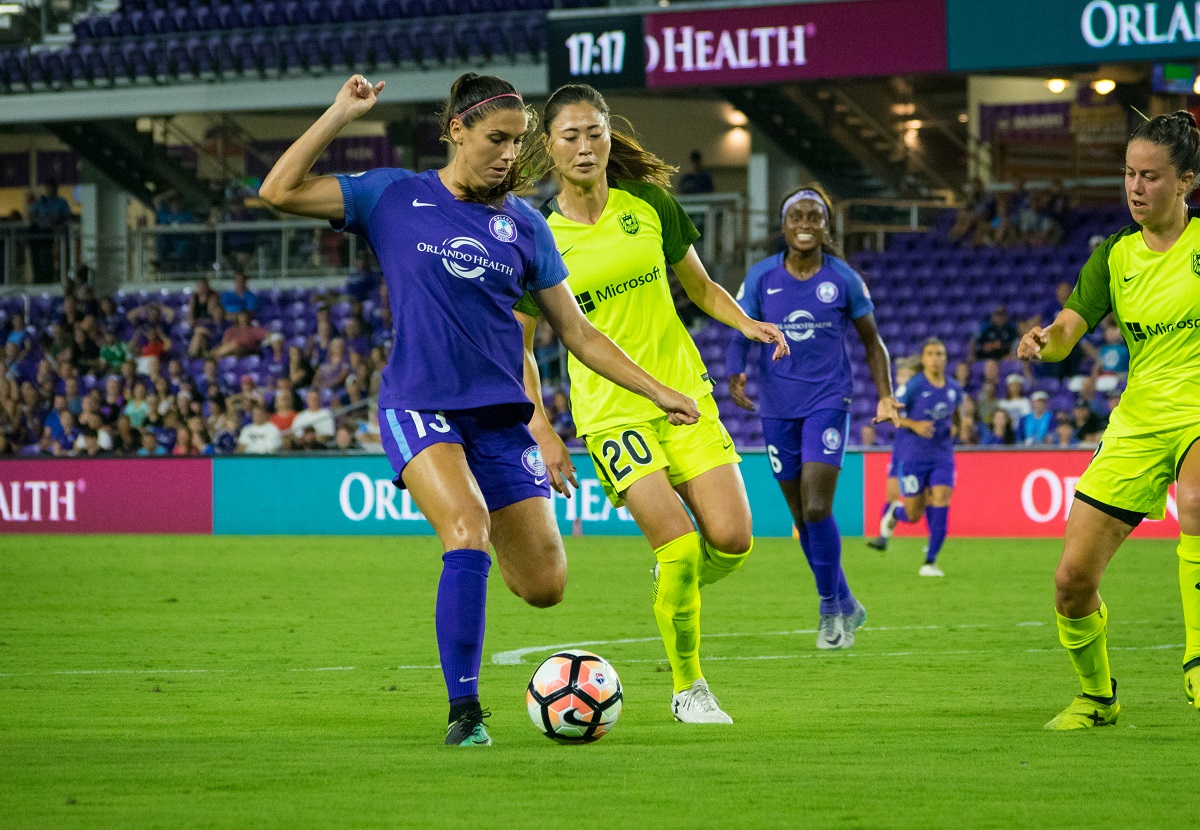
Welcome to Wednesday, Mane Landers. It is a busy week here at The Mane Land. Orlando City and Orlando City B play tonight, there are FIFA Club World Cup matches, Concacaf Gold Cup, and USWNT friendlies. It’s a lot, but it also means there’s a ton of soccer to watch, which is a good thing. Let’s get to the links.
Go West, Orlando City
Orlando City heads to Missouri to take on St. Louis City FC tonight. The Lions will be without Alex Freeman (international duty) and Rodrigo Schlegel (yellow card accumulation). Orlando City will need to deal with St. Louis City striker Joao Klauss while finding goals on the road. This is a must-watch midweek match. We will have a preview later today, and you should also listen to The Mane Land PawedCast to prepare.
Orlando City B Returns Home vs. Toronto FC II
Orlando City B hosts Toronto FC II at Osceola County Stadium tonight. Like the first team, we will have coverage for you. The Young Lions are coming off a two-week break after a loss to Carolina Core FC. It will be interesting to see which OCB shows up for the match. You can watch the match on mlsnextpro.com.
Club World Cup, Orlando-Style
There might not be as many people in the seats at the Club World Cup as FIFA would like, but Orlando is still a big part of it. The group stage finishes this week as the competition heads into the Round of 16. There’s a ton of prize money up for all the competitors no matter where they are currently in the standings. Our Michael Citro was at Camping World Stadium last night to cover LAFC vs. Flamengo in Group D.
USMNT News
The USMNT will face Costa Rica Sunday in a Concacaf Gold Cup quarterfinal match in Minneapolis. Malik Tillman has been a bright spot on the roster, though Orlando City fans will be watching Freeman. The perpetual search for a consistent striker continues for the USMNT, though Patrick Agyemang may be the answer — at least for now.
Free Kicks
- The Pride managed to maintain the Number 2 spot in SI.com’s Power Rankings despite the loss to Racing Louisville.
- So, the 2025 MLS All-Star jersey has arrived. Thoughts?
- There’s nothing quite like having your number retired after playing for a team for two whole years after playing for another club for six years. It is especially special when the new club has been in existence for a whole four years. Congratulations to former Orlando Pride forward Alex Morgan.
- Lyon has been relegated to Ligue 2 due to the club’s financial problems.
- Paul Mullin is headed to Wigan on a season long loan from the recently promoted Wrexham AFC. That’s probably a spoiler for a future episode of Welcome to Wrexham.
- Concacaf has cleared Jesse Marsh of allegations that he disregarded the competition’s rules regarding suspended match officials.
- After the Gold Cup, Agyemang may be making the move from Charlotte FC to Derby County.
- You may have seen that the USWNT is celebrating Pride month with rainbow numbers on the team jerseys. I am a supporter and ally, but it means even more to the players.
That will do it for today. Make sure you check back later for our match coverage. You can also follow our live coverage on Bluesky. Vamos Orlando!
Lion Links
Lion Links: 6/24/25
Orlando City’s upward aspirations, Tim Weah reportedly set for transfer, Club World Cup roundup, and more.

Happy Tuesday, everyone. We’ve got a busy week ahead of us with the Club World Cup approaching the end of the group stage, OCB at home on Wednesday, and Orlando City back in action with a pair of games. That means we have plenty to talk about, so let’s get straight into today’s links.
Orlando City’s Lofty Goals
Kyle Smith took some time after training on Monday to speak to the media and shed some light on where OCSC is at right now. The utility player was candid in saying he believes this year’s team is the best one he’s seen since he’s been with the club, and that’s saying something considering he’s the longest-tenured player on the team. Smith said the team is focused on climbing higher in the standings and that the two recent breaks will help the team do just that. He emphasized the importance of handling extra time off between games the right way by making sure the players are taking care of their bodies, getting in the gym, and recovering afterwards. That sort of professionalism paid off in the 1-0 win over the Colorado Rapids, so hopefully the same is true of Wednesday’s game against St. Louis City.
Tim Weah Reportedly on the Move
Nottingham Forest has reportedly agreed a deal with Juventus to sign Tim Weah and fellow Juve player Samuel Mbangula for roughly €22 million. That being said, personal terms have not yet been agreed upon with Weah, and that will likely take some time, since he’s playing for them at the Club World Cup, and the Italian side is probably keen to minimize outside distractions. Weah broke out with Lille during a four-season spell with the French side, earning a move to Juventus in 2023 as a result.
Club World Cup Roundup
The Club World Cup continues to roll on, as the tournament entered its final round of group stage games on Monday. Atletico Madrid became the first big name to exit the competition, as it beat Botafogo 1-0 to finish level with the Brazilians on six points but will be going home due to having worse goal difference. Atletico needed to win by at least three in order to overtake Botafogo in the standings and might have managed it if not for some poor finishing. In Group B’s other game, Paris Saint-Germain took down the Seattle Sounders 2-0 to finish top of the group. Seattle was given a brutal draw and accounted itself as well as can be expected, but ultimately, the Sounders exit the competition without picking up a point.
Club World Cup Takeaways
Speaking of the Club World Cup, what are some of the impressions so far of the expanded tournament? There have been plenty of good things, as teams have been taking it seriously with strong lineups, and barring the outlier that is Auckland City, no one team has been consistently getting shelled. On the other hand, making the jump from six teams to 32 simply feels like too much too soon, and that’s probably contributed to fluctuating levels of interest from local fans. High ticket prices and games starting in the heat of the day haven’t helped much either, as weather conditions have been a recurring concern among both fans and players. The competition is still a net positive overall, but there are certainly some things to learn from and improve upon next time around.
Free Kicks
- Check out some of the scenes from the Lions’ training session on Monday.
- The Orlando Pride slid down to fifth in ESPN.com’s NWSL power rankings.
- Three people are dead while a further 81 have been injured following the collapse of a stand at an Algerian soccer match.
- Manchester United has reportedly submitted an improved offer for Bryan Mbuemo.
- Manchester City’s Rico Lewis has had his Club World Cup ban extended for two additional matches.
That’s all I have for you this morning. Vamos Orlando!
Lion Links
Lion Links: 6/23/25
Pride fall to Racing Louisville, Seb Hines and Giles Barnes share insight on path to success in Orlando, USMNT defeats Haiti, and more.
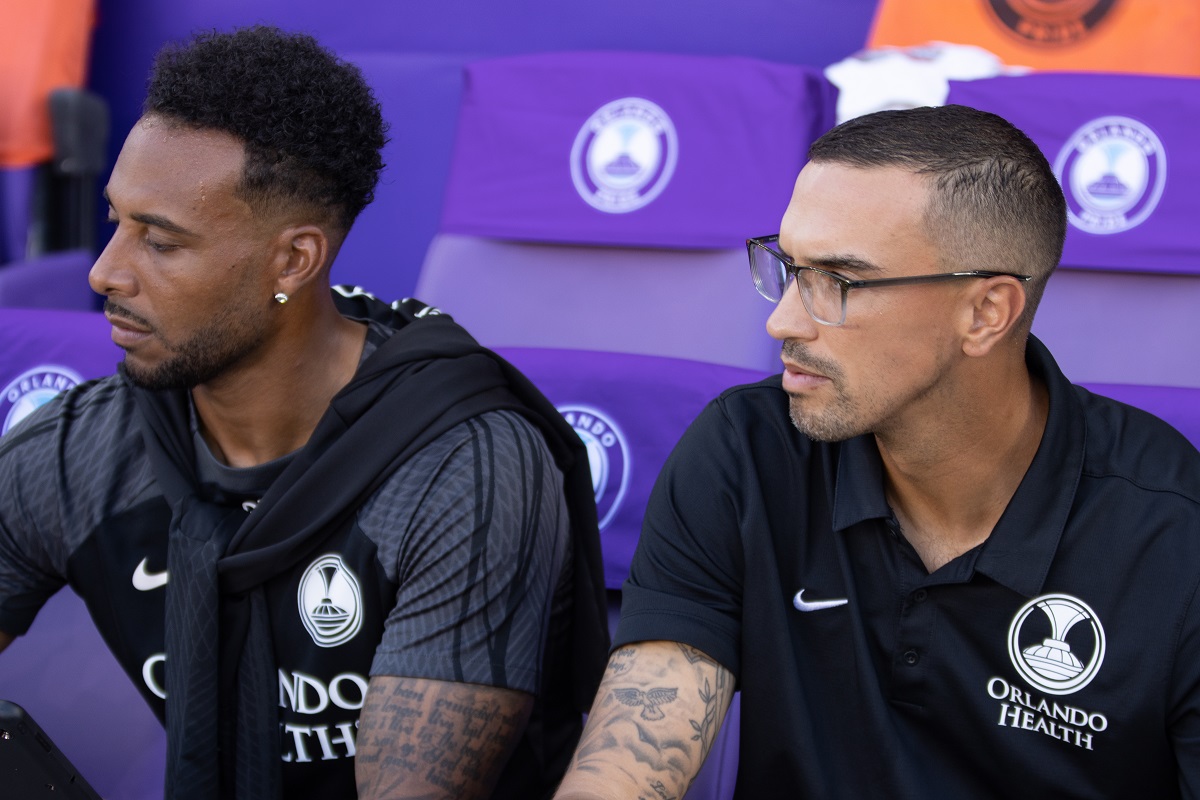
Hello, Mane Landers! I hope all is well with you down in Florida. I’ve been busy working and catching up with friends over the past week. Before we get started, let’s wish a belated happy birthday to Orlando Pride Vice President of Soccer Operations and Sporting Director Haley Carter, who turned 41 on Saturday. The Pride was the lone team in action over the weekend, while the Lions and OCB were off. We’ve got plenty to cover today, so let’s get to the links.
Pride Fall at Racing Louisville
The Orlando Pride fell to Racing Louisville 2-0 Friday at Lynn Family Stadium. Arin Wright scored the opening goal in the first half, and former Pride midfielder Taylor Flint converted a penalty kick for Racing Louisville. The Pride struggled offensively and failed to capitalize on their scoring chances. Orlando’s struggles in Louisville continue, as the club is winless in five matches at Lynn Family Stadium. The Pride will be on a long break, and their next match will be Aug. 3, taking on the Utah Royals at Inter&Co Stadium.
Seb Hines, Giles Barnes Share Insight on Path to Success in Orlando
Orlando Pride Head Coach Seb Hines and Assistant Coach Giles Barnes were featured in an interview in The Guardian. Both Hines and Barnes shared insight into their longtime friendship, which began with playing in English youth international camps, their different paths to playing in Major League Soccer, and how they became involved in coaching. Hines discussed his time as interim manager of the Pride in 2022 and how he brought in Barnes to help change the club’s culture. Hines and Barnes helped change the perception of the club and led the Pride to winning both the NWSL Shield and NWSL Championship last season.
USMNT Defeats Haiti to Win Group D in Gold Cup
The U.S. Men’s National Team defeated Haiti 2-1 Sunday night at AT&T Stadium in Arlington, TX, in their final match in the group stage of the 2025 Concacaf Gold Cup. The USMNT finished atop its group with three wins and nine points. Orlando City defender Alex Freeman made his third consecutive start and played 90 minutes.
Malik Tillman scored the opening goal 10 minutes into the match to give the USMNT the early lead. Haiti tied the match not long after Tillman’s goal. In the second half, Patrick Agyemang pulled the USMNT back in front. The USMNT advances to the quarterfinals as the group winner and will play its next match Sunday against the Group A runner-up which was the late game Sunday night and had yet to conclude as of this writing.
Club World Cup Weekend Recap
Another weekend of matches from the FIFA Club World Cup is in the books. On Friday, Benfica crushed Auckland City FC 6-0, while Flamengo beat Chelsea 3-1. LAFC was eliminated from advancing to the knockout round after a 1-0 defeat to ES Tunis. Bayern Munich edged Boca Juniors 2-1. On Saturday, Borussia Dortmund defeated Mamelodi Sundowns 4-3. Inter Milan needed a late stoppage-time winning goal from Valentin Carboni to edge Urawa Red Diamonds 2-1. Fluminense beat Ulsan HD 4-2, and River Plate and Monterrey ended in a scoreless draw. On Sunday, Juventus cruised to a 4-1 win over Wydad Casablanca. Xabi Alonso secured his first win as manager of Real Madrid with a 3-1 victory against Pachuca. Red Bull Salzburg and Al-Hilal played to a scoreless draw, with Manchester City playing Al-Ain in the late match Sunday. Today’s matches feature Atletico Madrid facing Botafogo, the Seattle Sounders hosting Paris Saint-Germain, FC Porto vs. Al Ahly, and Inter Miami taking on Palmeiras.
Free Kicks
- Orlando Pride midfielder Ally Lemos and forward Simone Jackson have been called-up to the U-23 U.S. Women’s National Team. The U-23 camp will be led by Orlando Pride Assistant Coach Yolanda Thomas.
USL Championship side San Antonio FC has signed former Orlando City defender Abdi Salim to a 25-day contract.
San Diego Wave winger Maria Sanchez has reportedly reach an agreement to return to her former club, Tigres of Liga MX Femenil, on a four-year contract.
Paul Pogba is reportedly set to return to playing soccer and has signed a two-year contract with Ligue 1 side AS Monaco.
That will do it for me today, Mane Landers. Enjoy your Monday, and I’ll see you next time.
-
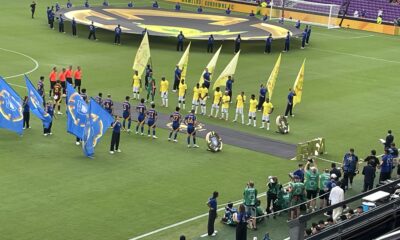
 Local Soccer Events1 week ago
Local Soccer Events1 week agoUlsan HD FC vs. Mamelodi Sundowns FC: Final Score 1-0 as South African Side Wins First FIFA Club World Cup Match in Orlando
-
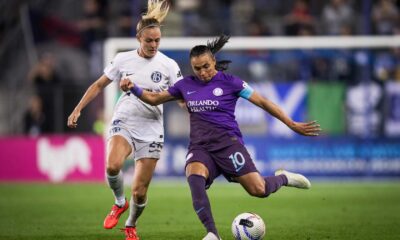
 Orlando Pride2 weeks ago
Orlando Pride2 weeks agoOrlando Pride vs. Bay FC: Preview, How to Watch, TV Info, Live Stream, Lineups, Match Thread, and More
-
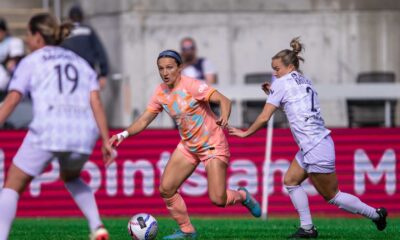
 Orlando Pride5 days ago
Orlando Pride5 days agoOrlando Pride vs. Racing Louisville FC: Preview, How to Watch, TV Info, Live Stream, Lineups, Match Thread, and More
-
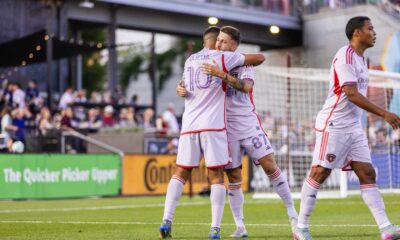
 Orlando City1 week ago
Orlando City1 week agoOrlando City vs. Colorado Rapids: Final Score 1-0 as Ojeda’s Goal Snatches Road Win for Lions
-
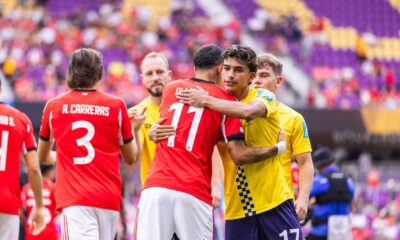
 Local Soccer Events5 days ago
Local Soccer Events5 days agoSL Benfica vs. Auckland City FC: Final Score 6-0 as Benfica Wears Down New Zealanders
-
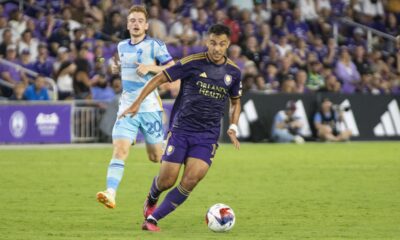
 Orlando City2 weeks ago
Orlando City2 weeks agoOrlando City vs. Colorado Rapids: Preview, How to Watch, TV Info, Live Stream, Lineups, Match Thread, and More
-
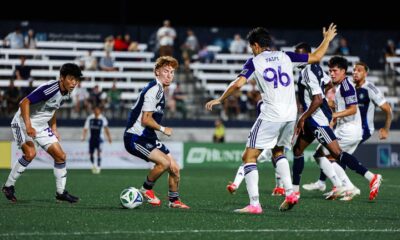
 Podcasts2 weeks ago
Podcasts2 weeks agoPawedCast Episode 484: OCB Beats Huntsville, Alex Freeman’s USMNT Debut, Colorado Preview, and More
-
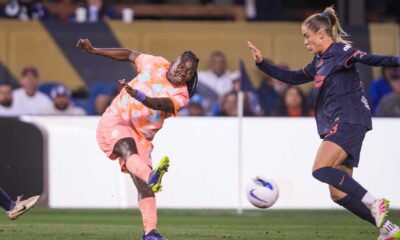
 Orlando Pride2 weeks ago
Orlando Pride2 weeks agoOrlando Pride vs. Bay FC: Final Score 1-0 as the Pride Hold On After Banda’s Goal


